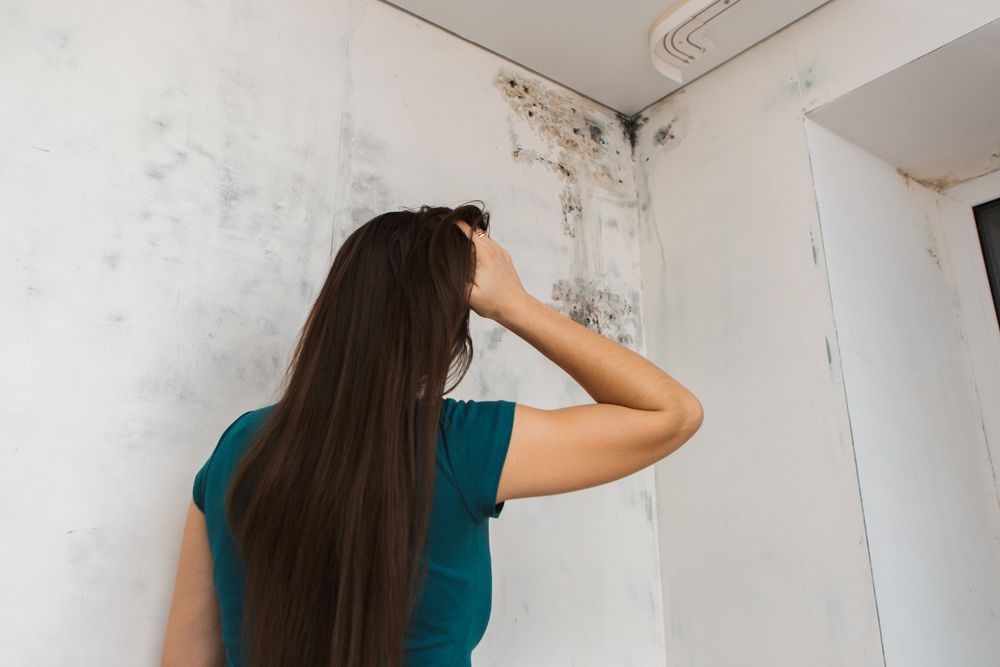Mold can grow anywhere and spread very easily, especially on on carpet, clothing, food, paper, and even in places you can’t see, such as areas behind kitchen cabinets, below sinks, the backside of drywall, areas inside walls around leaking or condensing pipes and air conditioning ducts systems and could be very costly and difficult to fix and get rid of.
Yes, mold can be good or bad. For example, Mold is essential in making medicine like Penicillin and food as the Brie cheese, Hard salami and dry-cured country hams and Yogurt, just to mention a few. Mold is also vital for the decomposition of organic matter’s decomposition in nature, but in the other hand, it can also be very, very bad, especially when it grows undetected in your home. Mold produce allergens and irritants, and in some cases toxins that can affect and compromises your health and daily routine.
Not only is a mold problem difficult and costly to fix, but mold can also produce allergens and irritants (and, rarely, toxins) that may compromise your health.
Preventing mold before it becomes a problem is the best approach and the main action to mold prevention is quite simple: Moisture Control.
Here are eight tips to minimize moisture indoors, and the mold that results on it.
- Dry wet areas immediately. Mold need moisture to grow, so eliminate wet areas right away. If you’ve experienced a flood, remove water-damaged carpets, bedding, and furniture if they can’t be completely dried. Even everyday occurrences need attention: don’t leave wet items lying around the house, and make sure to dry the floor and walls after a shower. Don’t leave wet clothes in the washing machine, where mold can spread quickly.
- Identify problem areas in your home and correct them. You can’t mold-proof your home, but you can make it mold-resistant. Do an audit of your home: where are the problem areas? Do you notice frequent condensation on an upstairs window? Is there a water stain on the ceiling from a persistent leak? Preventing mold from growing or spreading might be as simple as ripping up carpet in a damp basement, installing mold-resistant products, or repairing damaged gutters. Or it may be a matter of major excavation and waterproofing. Whatever the case, address the problem now. It might cost some money up front, but it will surely be more costly down the road if mold continues to grow unchecked.
- Prevent moisture with proper ventilation. It may be that your routine domestic activities are encouraging the growth of mold in your home. Make sure an activity as simple as cooking dinner, taking a shower, or doing a load of laundry doesn’t invite mold by providing proper ventilation in your bathroom, kitchen, laundry room, and any other high-moisture area. Vent appliances that produce moisture — clothes dryers, stoves — to the outside (not the attic). Use AC units and dehumidifiers (especially in humid climates), but make sure they don’t produce moisture themselves by checking them periodically and cleaning them as directed by the manufacturer. Your energy-efficient home may be holding moisture inside, so open a window when cooking or washing dishes or showering or run an exhaust fan.
- Monitor humidity indoors. The EPA recommends keeping indoor humidity between 30 and 60 percent. You can measure humidity with a moisture meter purchased from your local hardware store. You’ll also be able to detect high humidity by simply paying attention to potential problem areas in your home. Telltale signs of excessive humidity include condensation on windows, pipes, and walls. If you notice condensation, dry the surface immediately and address the source of moisture (for example, turn off a humidifier if water appears on the inside of nearby windows).
- Equip your home with mold-resistant products. Building a new home or renovating an old one? Use mold-resistant products like mold-resistant drywall or mold- resistant Sheetrock, and mold inhibitors for paints. Traditional drywall is composed of a gypsum plaster core pressed between plies of paper. Mold-resistant drywall is paperless — the gypsum core is covered in fiberglass, making the surface highly water- resistant. Moisture-resistant drywall is especially valuable in areas prone to wetness, such as bathrooms, laundry rooms, basements, and kitchens. Not only is traditional drywall more susceptible to mold than the paperless kind, but it is also difficult to rid of mold, and removal and replacement can be expensive. Mold resistant gypsum board is also available; the core of the drywall is developed in such a way to prevent moisture absorption, and thus prevent mold growth.
- Clean or repair roof gutters. A mold problem might be a simple matter of a roof that is leaking because of full or damaged gutters. Have your roof gutters cleaned regularly and inspected for damage. Repair them as necessary, and keep an eye out for water stains after storms that may indicate a leak.
- Improve air flow in your home. According to the EPA, as temperatures drop, the air is able to hold less moisture. Without good air flow in your home, that excess moisture may appear on your walls, windows and floors. To increase circulation, open doors between rooms, move furniture away from walls, and open doors to closets that may be colder than the rooms they’re in. Let fresh air in to reduce moisture and keep mold at bay.
- Direct water away from your home. If the ground around your home isn’t sufficiently sloped away from the foundation, water may collect there and seep into your crawlspace or basement.

